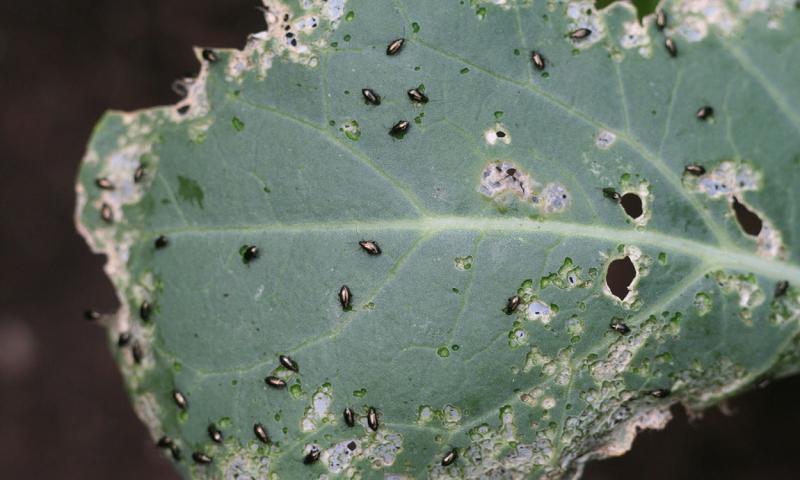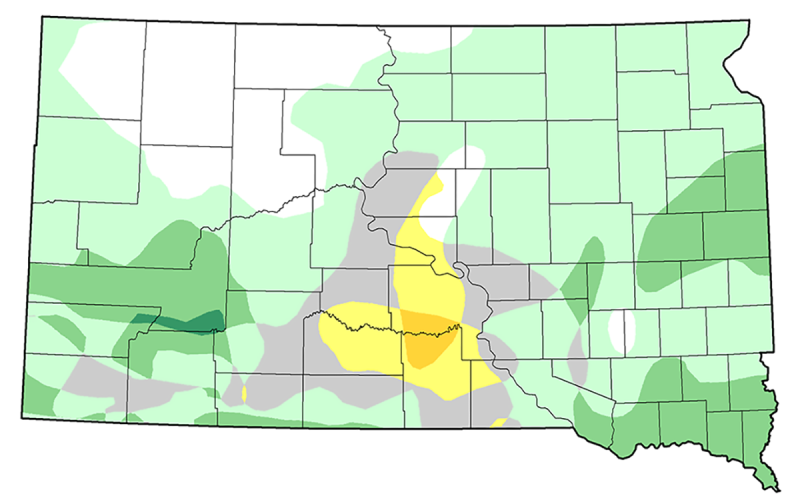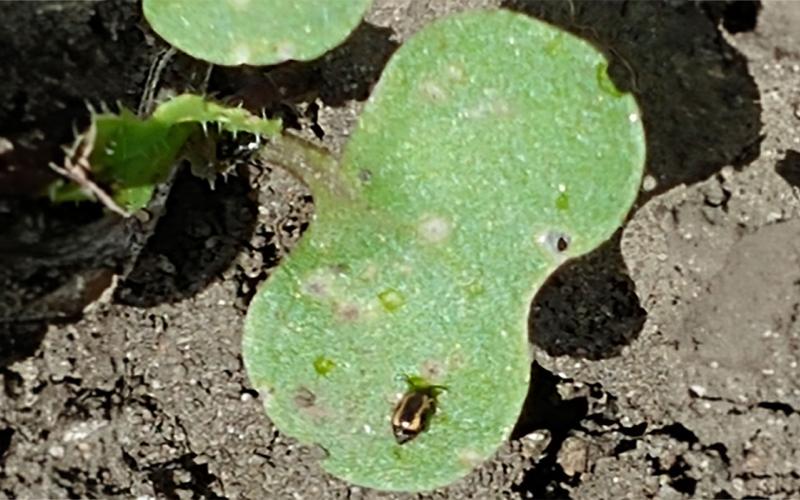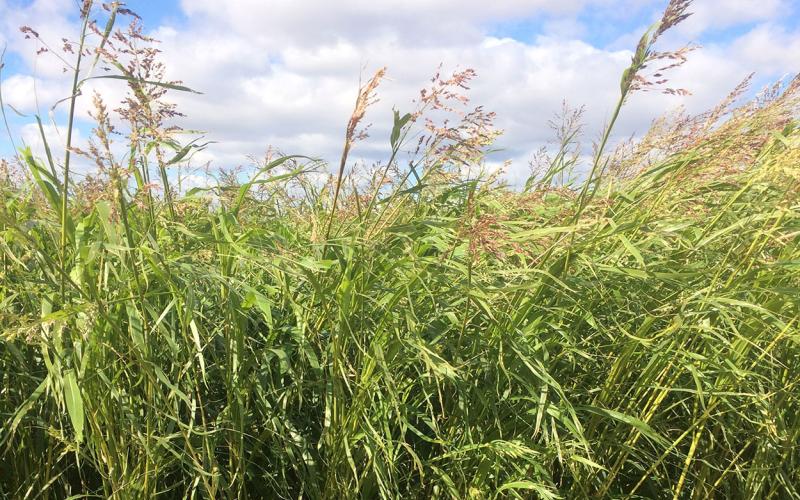
Originally Submitted: July 22, 2021
Large flea beetle populations in canola have been observed in neighboring states and within South Dakota. The hot, dry and sunny conditions that we have been experiencing throughout 2021 have been ideal for flea beetle populations. Typically, the summer population of flea beetles emerges in late July through early September. The earlier than normal emergence during 2021 is probably due to the warmer than normal temperatures that have been occurring. One of the crops that is often affected by flea beetle feeding is canola. There are three species of flea beetles that commonly infest canola and feed on the leaves. They are the crucifer flea beetle, hop flea beetle and striped flea beetle.
The main concern with flea beetle feeding occurs early in the season when vegetation can be rapidly removed by these pests (Figure 1). However, late-season feeding can also be a problem, as the summer generation of flea beetles will feed on the leaves, stems and developing pods.
Scouting and Management
The first thing to keep in mind when scouting fields for flea beetles is that their populations tend to be much higher near field edges. For this reason, the entire field should be scouted to determine how far into the field the infestation goes. Weather conditions can influence flea beetle infestations, and their populations tend to be more uniformly distributed during hot, calm and sunny days. If the populations are limited to the field edges, a perimeter insecticide application can effectively reduce the populations.
For later-season flea beetle populations, pod feeding can result in decreased yields and increased number of green seeds. If canola is beyond the 5.2 growth stage (when seeds in lower pods have turned translucent to green), yields will probably not be affected by flea beetle feeding. However, if populations that exceed 100 flea beetles per-plant are present, significant yield reductions may occur even after the 5.2 growth stage.
If late-season management is necessary, foliar insecticides will provide the best reduction in flea beetle populations. Table 1 has a list of insecticides with the shortest pre-harvest intervals that can be used for flea beetle management in canola. There are several other products available, and the table is not meant to be a comprehensive list. Depending on how close a field is to harvest, be sure to evaluate the label for the selected insecticide to ensure that it will not delay harvest.
| Insecticide (Active Ingredient) |
|
|
|---|---|---|
| Delta Gold (Deltamethrin) |
|
|
| Declare (Gamma-cyhalothrin) |
|
|
| Warrior II** (lambda-cyhalothrin) |
|
|
| Mustang Maxx (Zeta-cypermethrin |
|
|
* This list is not meant to be comprehensive. This list was also composed with a restriction on PHI to 7 days.
** There are numerous generic lambda-cyhalothrin products available.


